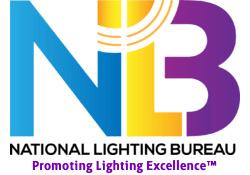Adoption of Light-Emitting Diodes in Common Lighting Applications
[fusion_builder_container hundred_percent=”yes” equal_height_columns=”no” hide_on_mobile=”small-visibility,medium-visibility,large-visibility” background_position=”center center” background_repeat=”no-repeat” fade=”no” background_parallax=”none” enable_mobile=”no” parallax_speed=”0.3″ video_aspect_ratio=”16:9″ video_loop=”yes” video_mute=”yes” overlay_opacity=”0.5″ border_style=”solid” padding_top=”100px” padding_bottom=”100px”][fusion_builder_row][fusion_builder_column type=”1_4″ layout=”1_4″ spacing=”” center_content=”no” hover_type=”none” link=”” min_height=”” hide_on_mobile=”small-visibility,medium-visibility,large-visibility” class=”” id=”” background_color=”” background_image=”” background_position=”left top” undefined=”” background_repeat=”no-repeat” border_size=”0″ border_color=”” border_style=”solid” border_position=”all” padding=”0px 0px 50px 0px” margin_top=”” margin_bottom=”” animation_type=”” animation_direction=”left” animation_speed=”0.3″ animation_offset=”” last=”no”][fusion_imageframe image_id=”2898″ style_type=”none” hover_type=”none” align=”none” lightbox=”no” linktarget=”_self” hide_on_mobile=”small-visibility,medium-visibility,large-visibility” animation_direction=”left” animation_speed=”0.3″]https://bachnercomm.wpengine.com/wp-content/uploads/2017/01/AdoptionofLEDs-small.jpg[/fusion_imageframe][/fusion_builder_column][fusion_builder_column type=”3_4″ layout=”5_6″ spacing=”yes” center_content=”no” hover_type=”none” link=”” min_height=”none” hide_on_mobile=”small-visibility,medium-visibility,large-visibility” class=”” id=”” background_color=”” background_image=”” background_position=”left top” undefined=”” background_repeat=”no-repeat” border_size=”0″ border_color=”” border_style=”solid” border_position=”all” padding=”0px 0px 0px 0px” margin_top=”” margin_bottom=”” animation_type=”” animation_direction=”left” animation_speed=”0.3″ animation_offset=”” last=”no”][fusion_text]
This report, a comprehensive U.S. Department of Energy (DOE) study summarizing the current U.S. lighting market, presents the findings for nine major lighting applications where light-emitting diodes (LEDs) are competing with traditional light sources. This analysis estimates the energy saved due to current levels of LED penetration, as well as the potential energy savings if these markets switched completely to LEDs. The selected applications are classified into three groups: indoor lamps, indoor luminaires, and outdoor luminaires. For indoor lamps, four applications are analyzed: A-type, directional, MR16 and decorative. For indoor luminaires, three applications are analyzed: downlight, troffer and other common fluorescent fixtures, and high-bay. And lastly for outdoor luminaires, two applications are analyzed: streetlight and parking lot and garage.
According to DOE, the study was conducted to answer four key questions:
- How much energy was consumed in 2012 by nine common residential, commercial, and industrial lighting applications where LED technology is competing with “traditional” lighting technologies?
- Which lighting technologies were used for each application?
- How much energy was actually saved by reliance on LED technology vs. traditional technologies?
- How much energy would have been saved if LED technology was the only lighting technology used?
Researchers classified the nine applications into three groups:
- indoor lamps (A-type, directional, MR16, and decorative);
- indoor luminaires (downlight, troffer and other common fluorescent fixtures, and high-bay); and
- outdoor luminaires (streetlight and parking-lot/garage).
Major findings of the study include:
- In 2012, about 49 million installations relied on LED technology, with LED A-type lamps leading the way, being used in just over four of every ten LED installations. Nonetheless, LED A-type lamps account for less than 1% of installed A-type lamps. That’s not the case when it comes to MR16 lamps, however; about one of every ten installed uses LED technology.
- The LEDs installed in 2012 generated source-energy savings of some 71 trillion British thermal units (tBtu), which translates into energy-cost savings of about $675 million.
Annual source energy savings could approach almost 3.9 quadrillion Btu (quads), if all nine applications used LEDs exclusively.
[/fusion_text][/fusion_builder_column][/fusion_builder_row][/fusion_builder_container]
Here goes your text ... Select any part of your text to access the formatting toolbar.